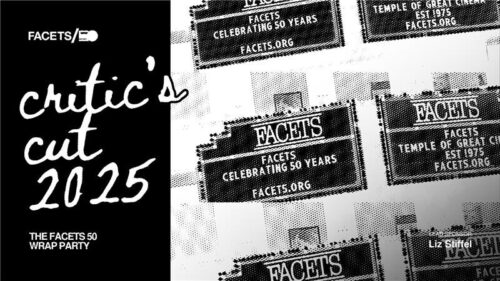LIFE ITSELF – uniting a community of Roger Ebert fans from Kartemquin Films on Vimeo.
Roger championed the documentary “Hoop Dreams,” directed by Steve James. James is part of Kartemquin Films, a company in Chicago that has produced a remarkable array of documentaries over the years (“At the Death House Door,” “Prisoner of Her Past,” “The Interrupters“). When Roger published “Life Itself,” Steve Zaillian (the writer of the screenplays for “Schindler's List” and “Moneyball“) brought the project to Steve James as an idea for a film. Roger agreed to the project, and allowed James to film, even in the hospital where Roger had been admitted in the last months of his life. Since then, James has conducted extensive research and dozens of interviews, and he’s hard at work getting the film to a final cut.
But final cut doesn’t mean you’re finished. Filmmaking involves seemingly endless post-production work, some of it really cool (commissioning and working on a score) and some of it more mundane but crucial (licensing archival footage, color correction of the image, music licensing).
To get that funding, James and Kartmequin have turned to Indiegogo with a campaign reaching out to fans.
Everyone at Kartemquin felt like this movie was well-suited to crowd-sourced fundraising. “Roger had this community of people who read him and followed him online,” explains James. “This is a chance to pull them into the film and make them a part of it.”
Crowdsourcing also makes it more likely the film will be seen in more theaters; most foundation and broadcast partners put a lot of constraints on theatrical release that make it hard for a distributor. “If you sell off rights to a partner, it hurts your ability to get theatrical release. We didn’t want to be in that position again. “The Interrupters” for instance, had rights limitations from the broadcast partners that made it challenging for the theatrical distributor to get it out there as much as we might have liked. We wanted this doc to play in theaters. This needs to be in theaters.”
But they didn’t try to fund the whole movie that way. James notes that they put careful thought into how much it was appropriate to try to fund through crowdsourcing, and they settled on a set of post-production expenses.
As is usually the case with this kind of fundraising, there are perks at various donation levels. A simple $25 gets you streaming access to the film before its theatrical premiere. $75 can get you two signed copies of the DVD—one for you and one for the educational institution of your choice. $100 can get you a ticket to a pre-release screening with the filmmakers present in Chicago, New York City, Los Angeles or Champaign-Urbana. (Not to be biased, but the Champaign-Urbana screening will probably be extra-special, since it’s Roger’s hometown.) At $500, you can get a hangout with James and producer Zak Piper at the Old Town Ale House to shoot the breeze, have a beer and talk about film. If you’re feeling really flush and have $5000 to throw into the pot, you could host a pre-release screening for you and 48 close friends at the Chicago screening room where Roger saw many of the films he reviewed, a screening room still used by film critics to preview movies.
One neat idea, and at the less expensive level of $67, is what Kartemquin is calling “the Ebert Movie Society.” Your $67 gets you password-protected access to a series of six hour-long conference call chats with James and other contributors (James also promises some guests, but Kartemquin is being coy about whom…) about how things are going for the movie, but also about the state of cinema more broadly. “It’s a way for people to connect with us,” explains James. “I do things like workshops at fests and universities, but a lot of people don’t have that access. The community idea can be in virtual space.”
And here’s another cool aspect of the campaign: They want to find 7,202 contributors, one for every review Roger published at The Sun-Times. To make it more fun, when you contribute, your contribution gets associated with a specific review, and they’ll tell you which one it is and send you the link here on RogerEbert.com. (No, you can’t call dibs on Roger’s review of “North.” The numbers are assigned in the order in which his reviews appeared.)
You can contribute to the campaign or learn more at Indiegogo.











